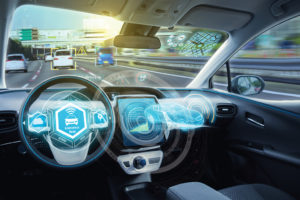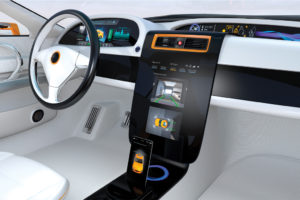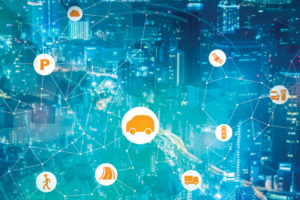By Chelsea Webster
What affects 1 in 3 Americans, costs trillions of dollars annually, and is a complete mystery to most people?
Why You Should Care About Cybersecurity
There are close to 400 cyber-attacks every single minute in the US, which affect 1 in 3 Americans every single year. It costs companies an average of $15.4 million annually to manage hacks against them, with total annual damage estimated at $6 trillion by 2021.
The point of these stats is not to make you paranoid, but to highlight how real, common, and far reaching cybersecurity threats are. It’s also to get you to take one more step in your thought process and connect cybersecurity to your vehicle – your connected car – knowing that online threats are targeting people everywhere. It should get you thinking about how many cars there are, how big a target market that represents for hackers, and what you can do to protect yourself and your vehicle.
The Connected Car
So, what exactly IS a connected car? A connected car is any vehicle that has wireless connectivity to the Internet and/or other devices, like a satellite or an auto manufacturer or another vehicle or pedestrian. A connected car collects, sends and receives information, processes it, and actions it or alerts the driver to information that requires human action. The image below from the Future of Privacy Forum is a great visual explanation of some of the components.
What Data Does a Car Collect?
Your vehicle is a nosey piece of machinery. It collects external data on traffic, road conditions, signage, markings, weather, and lots more. It also collects a boat load of internal data on you through cameras and microphones. That data can be anything from eye movement to driving habits. The connected car…
By Milirsan Pugalendiran, B.Eng. Civil Engineering, Lassonde School of Engineering – York University
Tom Arnold Scholarship in Parking Industry Advancement at York University 2018 Recipient
With the rise of mass-manufactured automobiles, a new industry was created. The parking industry was born with rise of affordable automobiles and has changed significantly since Henry Ford’s invention of the assembly line in 19081. The parking industry started off with simple parking lot designs and has now evolved to parking lots capable of self-parking. We now face even greater challenges with the rise of Autonomous vehicles which calls for “Smarter” parking lots. This article looks at how the Parking Industry has changed over the years and what the future holds for parking.
Past
The first automobile can be as early found in the late 1600’s but the parking industry began with the rise of the mass-produced vehicle, the “Model T”1. Something that was only for the wealthy had now become affordable for the average person.
People needed a space to park their cars, which prompted the creation of parking lots. With 23 million cars in America, parking became a serious issue and city officials turned to engineers to invent a solution which resulted in the first parking lots4.
At the beginning, parking lots were designed with diagonal bays to accommodate the fairly large automobiles and to allow for ease of parking2. Early automobiles were also not as weather resistant compared to the automobiles of today3 and so had to be designed with weather protection in mind. High-rise, fully enclosed parking garages were built to accommodate the larger volumes and to protect these vehicles from the elements. Innovations such as the “D’Humy ramp system”, which created split-level floors to maximize spaces, were incorporated into the high-rise buildings3.
Vehicles were parked by professional valets…
By Danielle Desjardins
We are on the brink of a revolution, a revolution that will profoundly affect society, change the way cities look and function and fundamentally transform how people and goods move.
It’s been dubbed the “driverless revolution” and it will be brought about by the advent of autonomous cars (AV), cars that drive themselves with little or no human intervention. In addition to their effect on modes of transport, AVs are poised to disrupt many industries: fast food, real estate, hotels, airlines — large industries that will have to shift their strategies in the wake of driverless cars.
The biggest disruption could be on parking. Among other innovations the revolution will bring, we will see AV fleets moving continuously between the various places they are needed, rendering the need for close and convenient parking spaces much less necessary.
Ready for the driverless revolution?
In the last issue, we discussed the potentially impending driverless revolution and the impact it could have on the parking industry1. In the envisioned driverless society, fully automated vehicles (AVs) would drop their passengers at their destination, go home to park or return in the transportation network while awaiting their next ride and the parking industry would be massively disrupted.
To some, the driverless revolution is already be upon us and our roads will be overtaken by robocars within the next five to ten years. Is this belief shared by the people involved in parking and are they getting ready for it?
In need of a crystal ball
Although all those interviewed for this article believe AVs will eventually rule our roads, some also believe that the revolution will be a long time coming.
“I don’t see it happening in my lifetime”, states Professor Michel Lejeune, who teaches sociology of technology at École Polytechnique in Montréal. The technology may be outstanding and almost…
By Danielle Desjardins
We are on the brink of a revolution, a revolution that will profoundly affect society, change the way cities look and function and fundamentally transform how people and goods move.
It’s been dubbed the “driverless revolution” and it will be brought about by the advent of autonomous vehicles (AV), cars that drive themselves with little or no human intervention. In addition to their effect on modes of transport, AVs are poised to disrupt many industries: transit, insurance, all industries that currently need drivers, driving support services, and the technology sector — large industries that will have to shift their strategies in the wake of driverless cars.
One major disruption could be on parking. Among other innovations, the revolution will bring, we will see AV fleets moving continuously between the various places they are needed, rendering the need for close and convenient parking spaces much less necessary.
As Alain L. Kornhauser of Princeton University told the online magazine Curbed, “Having parking wedded or close to where people spend time, that’s going to be a thing of the past. If I go to a football game, my car doesn’t need to stay with me. If I’m at the office, it doesn’t need to be there. The current shopping centre with the sea of parking around it, that’s dead.”1
How soon will that revolution begin? A number of car manufacturers predict that AVs will be launched about 2020, with many suppliers focusing first on driverless taxis. RethinkX, a think tank on technology-driven disruption, believes that by 2030 “95% of U.S. passenger miles traveled will be served by autonomous electric vehicles.” 2 Others foresee a clear majority of urbanites not even needing to own cars by 2040, because they’ll subscribe to some form of on-demand self-driving car service.3 McKinsey & Company believe that once technological…
By Chelsea Webster
Let’s start out with a quick poll:
What model year is your vehicle?
Okay so there was only one respondent, but I think it’s safe to say that with new car sales of 3.8 million in Canada1 and 34.5 million in the US in the last 2 years2, there are a LOT of vehicles on our roads that are a 2014 model year or newer.
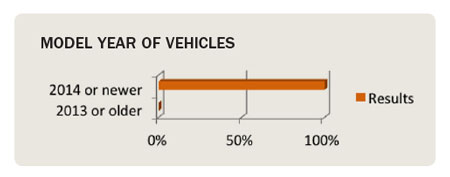
Why does this matter?
Consider this quick rundown of the major car advances to land in our vehicles.
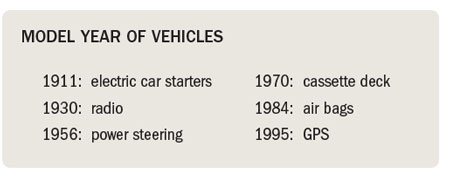
So, now that internet connectivity is showing up in cars, you can see how such a big change is cause for discussion. We’re basically taking the Internet of Things (if this term isn’t familiar, it’s the concept that everything is now connected on the internet – from your home thermostat to your heart rate monitor to the security camera on the street4) and applying it to vehicles. This concept of the fully connected and communicative vehicle is called the Internet of Vehicles (or IoV as we’ll refer to it).
IoV Fundamentals
Overall, the IoV is a massive network of connection points to the internet which are in constant communication. It’s meant to guide and supervise vehicles while providing abundant multimedia and mobile Internet application services. There are several components to understand within IoV, so let’s go over a few details.
Why would we want this? There are four main benefits of IoV5: safety (if you know the car in front of you is stopping, you can brake early); environmental damage mitigation (use less horsepower to reduce emissions); energy conservation (maximize efficiency in gas consumption); and intelligent communication (avoid a traffic jam, construction, or pay for parking).
Who is the car communicating with? There are several important groups…




